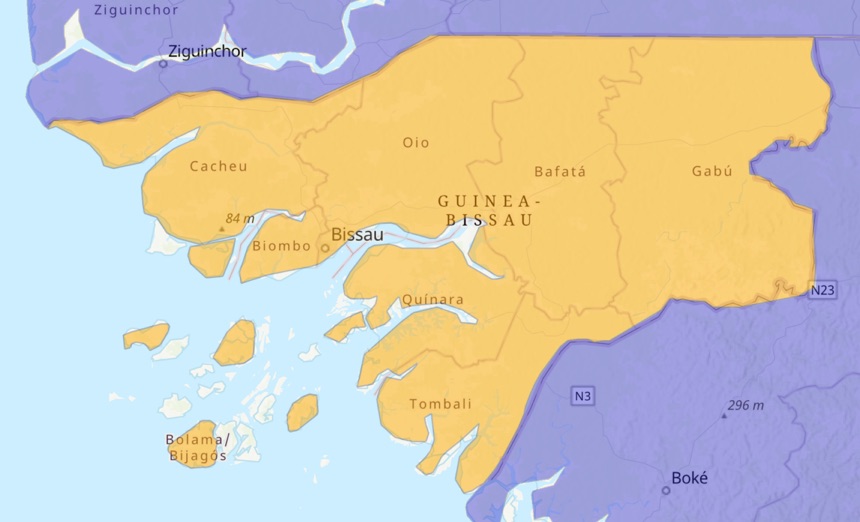Guinea-Bissau gained independence from Portugal in 1974 after 20 years of armed mutinies. During these years and following its independence, the country accumulated large quantities of arms and ammunition. Moreover, during the cold war, significant numbers of bombs and rockets were stockpiled to fuel Soviet aircraft stationed in Guinea-Bissau.1 The country’s political situation has been unstable, with a civil war in 1998–2000, several military coups, and the assassination of the president in 2009.2
The country’s guiding gun control law was passed in 1975. Guinea-Bissau has signed and ratified the Arms Trade Treaty.3 The UN Regional Centre for Peace and Disarmament and Development in Africa (UNREC); the Economic Community of West African States (ECOWAS); the UN Department of Economic and Social Affairs (UNDESA); the UN Office for Disarmament Affairs (UNODA); the UN Integrated Peacebuilding Office in Guinea-Bissau (UNIOGBIS); the Mines Advisory Group (MAG); the Bonn International Centre for Conflict Studies (BICC); and the HALO Trust have supported various ammunition management programmes in the country, including those on ammunition destruction and stockpiles security.4
1 Adedeji Ebo and Laura Mazal, Small Arms Control in West Africa (London: Security and Peacebuilding Programme, International Alert), https://www.international-alert.org/wp-content/uploads/2021/09/Security-Small-Arms-Control-W-Africa-Vol1-EN-2004.pdf.
2 “Guinea-Bissau,” HALO Trust, 2022, https://www.halotrust.org/where-we-work/africa/guinea-bissau.
3 Philip Alpers and Marcus Wilson, Guinea-Bissau – Gun Facts, Figures and the Law (GunPolicy.org, Sydney School of Public Health, University of Sydney, 2022), https://www.gunpolicy.org/firearms/region/guinea-bissau.
4 “Ammunition Management Activity Platform (A-MAP),” GICHD, 2022, https://a-map.gichd.org; Guinea-Bissau, National PoA Report.
Launch the country dashboard
Further information
Accidental explosions
Since the Small Arms Survey began collecting data in 1979, three accidental explosions have been reported in Guinea-Bissau.
Table 1. Accidental explosions in Guinea-Bissau (1979–2021)
Year | Location | Owner/manager | Deaths | Injuries |
2000 | Cufar | State (military) | 15 | N/A |
1998 | Paiol de Bra | State (military) | N/A | N/A |
1995 | Cufar | N/A | 14 | N/A |
Source: “Unplanned Explosions at Munitions Sites (UEMS) Database,” Small Arms Survey, updated December 15, 2021, https://smallarmssurvey.org/database/unplanned-explosions-munitions-sites-uems.
Cases of diversion
In 1998–1999, invasions and theft of arms and ammunition from bunkers and depots took place throughout the country.
Source: Guinea-Bissau, National Report on the Implementation of the Programme of Action on Small Arms and Light Weapons (PoA) and the International Tracing Instrument (ITI) (New York: Permanent Mission of Guinea-Buissau to the UN, 2010), https://unoda-poa.s3.amazonaws.com/poa-reports-le/Guinea-Bissau-2010-en.pdf.
Disposal
Insufficient information on the disposal of ammunition in Guinea-Bissau.
Needs
To further enhance safe and secure ammunition management, the following needs have been identified for Guinea-Bissau:
- Development or refinement of standards and procedures on stockpile management; and
- Capacity development for the destruction of surplus stockpiles.
Source: Bureau of Political-Military Affairs, US Department of State, To Walk the Earth in Safety (Washington, DC: US Department of State, 2018), https://www.state.gov/wp-content/uploads/2019/04/tweis_2019.pdf.



